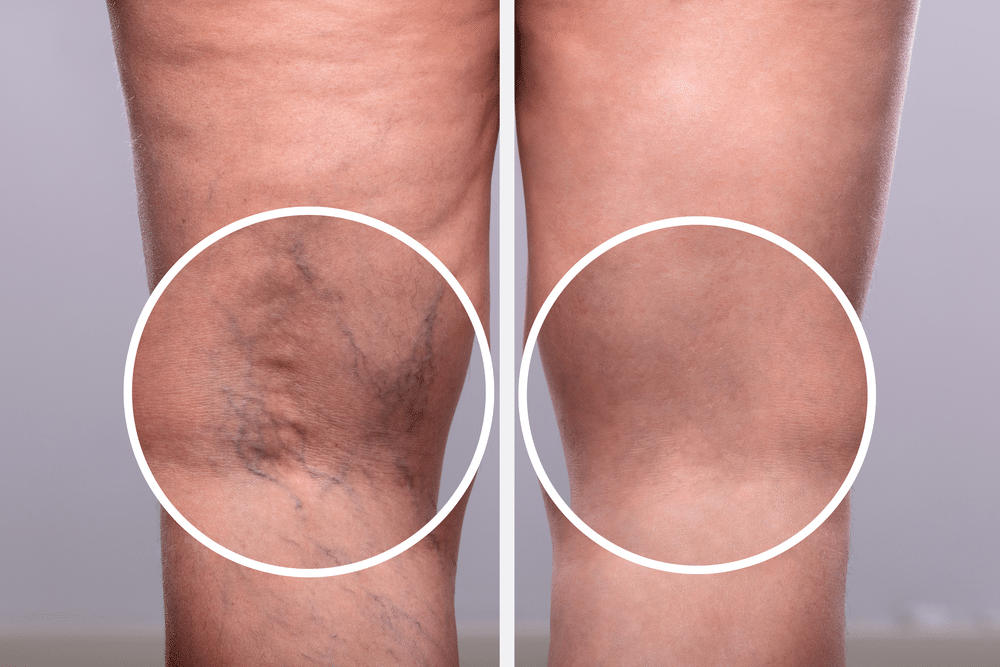When there is a structural abnormality in your veins, it can result in blocked and twisted veins that are visible below your skin. These abnormally enlarged blood vessels can be unsightly. Left untreated, they can pose a risk to your health. Our expert team at New England Cosmetic Surgery & Lazer Center in Weymouth Massachusetts can use laser vein treatment to safely and effectively treat your bothersome veins.
How Does Laser Vein Treatment Work?
There have been significant innovations with cosmetic lasers including advanced machines that:
- Protect your skin and keep it cool throughout the treatment
- Precisely target areas of your skin as small as 0.5mm
- Work quickly and efficiently so your treatment is shorter
Pulsed-dye laser concentrates a beam of light onto the blood vessels in your skin. The laser uses yellow light which is considered to be very safe. The intense burst of light generated by the pulsed-dye laser is absorbed by the targeted veins, destroying them while leaving all of your surrounding skin undamaged. The damaged veins will then be absorbed by your body. Your blood flow will continue through deeper vessels as opposed to right below the skin where it is visible.
What Is Treatment Like?
Laser vein treatments are done as a quick outpatient visit and only take a few minutes. This simple laser treatment is done on the outside of your skin, there is no incision, and it does not require an anesthetic. It may take multiple treatments to remove all of your bothersome veins. Our team will assess your case and decide on the best treatment protocol.
Is Laser Vein Treatment Painful?
The treatment is not painful. The laser produces a cold spray against your skin right before the laser pulses which diminishes any feeling. No anesthesia is required.
Is There Any Recovery Time After a Laser Vein Treatment?
This non-invasive procedure has no recovery time. We may advise you to avoid sun exposure for a short time following your treatment, and you will use an approved moisturizer to keep your skin hydrated.
Why Are Some Veins Problematic?
What Is the Difference Between Spider Veins and Varicose Veins?
Spider veins are typically small, thin lines. They are often flat but may be slightly raised. Typically they will appear as red, purple, or blue. Varicose veins tend to be both larger and deeper than spider veins. They often appear to be lumpy or twisted and will usually be red or flesh-colored.
Who Is at Risk?
Spider and varicose veins are very common amongst adults. Women are affected more frequently than men. People whose job requires them to sit or stand for long stretches of time are at a higher risk.
Additional risk factors include advanced age, being overweight, pregnancy, birth control pills, and a history of blood clots. There does seem to be a hereditary factor, so people with a family history are more likely to have issues themselves.
What Are the Symptoms?
You may have no symptoms other than the visual appearance of the veins. Some people do experience problematic symptoms which include swelling, burning, itching, throbbing, or tingling. In extreme cases, people can develop a brown discoloration of the skin surrounding the veins and skin ulcers over the site of the veins.
Spider veins are commonly found on the face. These highly visible veins can impact your confidence. They can be covered with makeup as a temporary fix, but permanent removal will restore your confidence.
Are These Engorged Veins a Risk to Your Health?
Blood clots in deeper veins, known as deep vein thrombosis (DVT), can be a serious risk. These clots can break away and travel to your lungs putting you at risk for a blockage called a pulmonary embolism which can be deadly.
Laser Vein Therapy Offers New Solutions to Common Problems
Spider veins can affect 50% of the adult population and varicose veins affect 3 in 10 people. These unsightly veins can impact your confidence. Talk to our expert team at the New England Cosmetic Surgery & Laser Center in Weymouth, MA to learn how we can help you deal with your problem veins.
